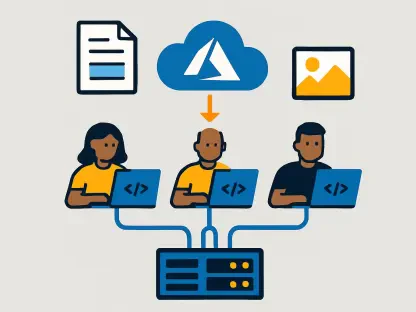In a chilling revelation of cyber espionage, a sophisticated operation known as the TAOTH campaign has emerged as a significant threat to dissidents and high-value individuals across East Asia, exploiting both outdated software and targeted phishing tactics to deploy an array of malicious payloads. Identified in June, this campaign came to light through a peculiar security incident involving the installation of two malware families, C6DOOR and GTELAM, on a victim’s system via Sogou Zhuyin, an input method editor (IME) software for Traditional Chinese users that has been abandoned since 2019. By October 2024, attackers had hijacked the lapsed update domain, turning a once-legitimate tool into a vehicle for distributing harmful updates. Telemetry data suggests that hundreds of victims have been affected, with infections paving the way for deeper post-exploitation activities. This article delves into the intricate mechanisms of the TAOTH campaign, exploring how it leverages end-of-support software and spear-phishing to target specific groups, particularly dissidents, journalists, and business leaders in the region, while also examining the malware families involved and the broader implications for cybersecurity.
1. Unpacking the Core Strategies of the TAOTH Campaign
The TAOTH campaign stands out due to its cunning use of an abandoned Sogou Zhuyin IME update server, paired with spear-phishing operations, to distribute multiple malware families such as TOSHIS, C6DOOR, DESFY, and GTELAM, primarily targeting users in East Asia. This operation capitalizes on software no longer supported by its developers, turning a trusted tool into a conduit for cyber threats. The attackers employ intricate infection chains, including hijacked software updates and deceptive interfaces like fake cloud storage or login pages, to disseminate malware and harvest sensitive data. A striking aspect of this campaign is its focus on high-value targets—dissidents, journalists, researchers, and technology or business leaders in regions like China, Taiwan, Hong Kong, Japan, and South Korea, as well as Taiwanese communities abroad. Infrastructure analysis further reveals connections to previously documented threat activities, sharing command-and-control (C&C) servers, malware variants, and tactics centered on espionage and email abuse, indicating a persistent and organized threat actor.
Beyond the technical prowess, the campaign’s victimology underscores a deliberate intent to undermine specific societal segments. The use of decoy documents with politically charged content suggests a strategic effort to ensnare individuals who might pose a challenge to certain political narratives or authorities. This targeted approach is not random but meticulously planned, aiming to extract valuable intelligence or disrupt the activities of influential figures. Cybersecurity solutions like Trend Vision One™ have been instrumental in detecting and blocking the indicators of compromise (IOCs) associated with TAOTH, offering tailored hunting queries and threat intelligence updates to mitigate risks. Understanding these core strategies provides a foundation for dissecting the specific operations and malware deployed, highlighting the urgent need for robust defenses against such sophisticated threats.
2. Delving into Sogou Zhuyin Exploitation Tactics
The first major operation under the TAOTH campaign revolves around Sogou Zhuyin, an IME software designed for Taiwanese users to input Traditional Chinese characters, which ceased updates in 2019, leaving it vulnerable to exploitation. In October 2024, attackers seized control of the abandoned update server, registering the lapsed domain to host malicious updates. Since then, this channel has been used to deploy four distinct malware families—TOSHIS, DESFY, GTELAM, and C6DOOR—each serving purposes ranging from remote access to information theft. The infection process begins with victims downloading a legitimate installer from the internet, often misled by alterations to the Sogou Zhuyin Wikipedia page in March of this year that point to a malicious domain. Within hours of installation, an automatic update mechanism triggers, connecting to a compromised URL embedded in the updater executable, ZhuyinUp.exe, to retrieve a malicious configuration file. This file directs the download of an update installer, which, after validation, executes one of the malware payloads to profile and target victims.
Victim distribution primarily affects users in Taiwan and extends to Taiwanese communities globally, reflecting the software’s focus on Zhuyin users. Each malware family plays a unique role in the attack chain. TOSHIS, a loader variant of Xiangoop, modifies legitimate executables to execute malicious shellcode, targeting specific language IDs like zh-TW and ja-JP. DESFY acts as spyware, collecting filenames from key directories and transmitting data to C&C servers, while GTELAM focuses on document files, encrypting data and exfiltrating it via Google Drive. C6DOOR, a Golang-based backdoor, supports extensive commands for system manipulation and data theft. Although most activities remain in the reconnaissance phase, limited post-exploitation actions, such as environment inspection and tunneling via Visual Studio Code (VSCode), have been observed in select cases, indicating a cautious approach by the attackers to identify high-value targets before escalating their efforts.
3. Exploring the Spear-Phishing Operation
Further investigation into the TAOTH campaign uncovered a parallel spear-phishing operation orchestrated by the same threat actor, targeting a broader East Asian demographic with TOSHIS malware distribution via deceptive websites. This operation employs two primary phishing techniques: fake login pages that trick users into granting OAuth consent to attacker-controlled applications, and fraudulent cloud storage pages that prompt the automatic download of malicious archives. The targeted regions include China, Hong Kong, Taiwan, Japan, and South Korea, with a smaller impact noted in the United States and Norway. The infection process starts with spear-phishing emails containing malicious URLs or decoy documents designed to lure recipients into interacting with harmful content. The ultimate goals are to deploy TOSHIS for system compromise or to gain unauthorized access to Google or Microsoft mailboxes through OAuth consent, enabling further exploitation of the victim’s network or contacts.
Decoy documents used in this operation often carry politically themed content, specifically crafted to attract researchers, dissidents, journalists, and technology or business executives. Two distinct attack paths emerge within this phishing strategy. The fake cloud storage path mimics legitimate services, automatically downloading an archive named material.zip, which contains a corrupted PDF and a fake reader executable that sideloads TOSHIS malware. Conversely, the fake login path uses enticing themes like birthday gifts or coupons to redirect users through obfuscated intermediary pages to legitimate OAuth consent portals, requesting permissions for email manipulation. These tactics reveal a calculated effort to exploit trust in familiar services and personal incentives, amplifying the campaign’s reach and impact across a diverse set of victims in the region.
4. Attribution and Connections to Broader Threat Activities
Analysis of the TAOTH campaign reveals compelling evidence linking it to previously documented threat activities, specifically Cases 1 and 4 from ITOCHU’s research, suggesting a unified threat actor group behind these operations. Shared C&C infrastructure, notably IP addresses like 45.32.117.177, ties TAOTH to these earlier cases, indicating a consistent operational backbone. Additionally, the use of TOSHIS as a variant of the Xiangoop malware family, alongside shared Cobalt Strike beacons with identical watermarks and C&C addresses, further solidifies this connection. The threat actor employs consistent tactics, techniques, and procedures (TTPs), such as establishing VSCode tunnels for persistence and launching supply chain attacks through legitimate applications like YouDao and Sogou, showcasing a pattern of exploiting trusted software for malicious ends.
Geographical targeting also aligns closely, with a persistent focus on China, Taiwan, and Hong Kong, reflecting a strategic intent to disrupt or surveil specific regional entities. These overlapping elements—shared tools, infrastructure, and methodologies—point to a sophisticated and enduring adversary with deep resources and expertise in cyber espionage. This attribution not only enhances understanding of the campaign’s scope but also underscores the importance of tracking such threat actors across multiple operations. By recognizing these patterns, cybersecurity professionals can better anticipate future moves, fortify defenses against similar supply chain and phishing attacks, and disrupt the operational continuity of this persistent threat group in East Asia and beyond.
5. Reflecting on Defensive Measures and Future Vigilance
Looking back, the TAOTH campaign demonstrated a chilling adeptness at exploiting end-of-support software and spear-phishing to distribute malware and conduct reconnaissance on high-value targets across East Asia. Attackers maintained a stealthy approach in the Sogou Zhuyin operation, using spyware like DESFY and GTELAM to gather intelligence discreetly, with GTELAM notably leveraging Google Drive for data exfiltration. Simultaneously, the spear-phishing efforts targeted a wide array of individuals with deceptive emails, aiming to compromise systems or access email accounts for broader exploitation. These dual strategies highlighted a calculated intent to undermine dissidents and influential figures through persistent and tailored cyberattacks.
Moving forward, enterprises must adopt proactive measures to safeguard against such sophisticated threats. Routine audits to identify and eliminate end-of-support software from systems are critical, as these applications represent easy entry points for attackers. Users should exercise caution by verifying file extensions of all downloads from the internet and scrutinizing permissions requested by cloud applications before granting access. Leveraging advanced cybersecurity platforms like Trend Vision One™ offers a robust defense, providing centralized risk management, AI-powered threat detection, and actionable intelligence to counter evolving threats. By integrating such tools and maintaining vigilance, organizations and individuals can better protect sensitive data and disrupt the operational success of campaigns like TAOTH in the future.









